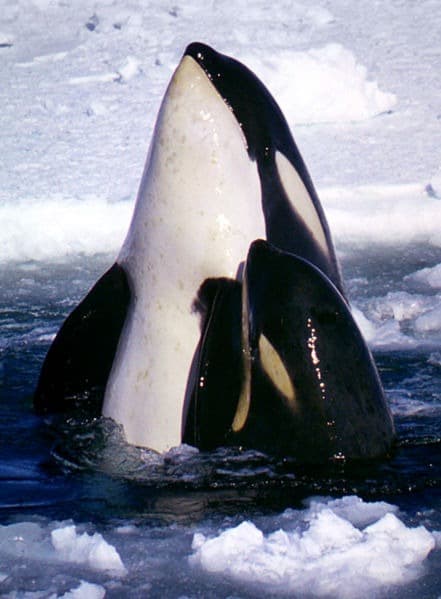Discover the fascinating world of the fattest animal on Earth! When we think about large creatures, our minds often wander to majestic beasts like elephants or whales. But what exactly makes an animal the fattest? This intriguing topic invites us to explore not only size but also the incredible adaptations these animals possess to thrive in their environments. Join us as we delve into surprising facts and uncover the secrets behind nature's chubbiest champions.
In this article, we will take a closer look at some of the most astonishingly large and fat animals on our planet. From the depths of the ocean to the vast landscapes of Africa, these creatures have evolved unique characteristics that allow them to survive and flourish. By understanding their biology and behavior, we gain a deeper appreciation for the diversity of life on Earth. Let’s embark on this journey to learn more about the fattest animals and what makes them so remarkable.
The Largest Living Creatures - Blue Whales
Blue whales hold the title for being the largest living animals on Earth. These magnificent marine mammals can grow up to 100 feet long and weigh over 200 tons. Their immense size is supported by layers of blubber, which serves as insulation and energy storage. This adaptation allows blue whales to endure long migrations across the globe while maintaining their body temperature in cold waters.
Beyond their physical dimensions, blue whales play a crucial role in marine ecosystems. They consume vast quantities of krill, helping regulate plankton populations. Despite their massive size, they face numerous threats such as climate change, pollution, and ship strikes, making conservation efforts vital for their survival.
Interestingly, blue whales are not just the largest but also among the fattest animals due to their significant blubber reserves. These reserves enable them to sustain themselves during periods when food is scarce, showcasing their incredible adaptability to harsh conditions.
Giant Land Mammals - African Elephants
African bush elephants are renowned for their impressive size, standing as the largest land mammals. While they may not match the sheer mass of blue whales, they boast considerable body fat percentages ranging from 5.24% to 15.97%. This fat helps them endure prolonged dry seasons where water and vegetation become scarce.
Elephants exhibit fascinating behaviors tied to their fat stores. During droughts, they rely on stored fat to maintain energy levels until resources become available again. Additionally, their fatty humps provide essential nutrients during migration, ensuring their survival even in challenging terrains.
Despite their robust physique, African elephants encounter various dangers including poaching and habitat loss. Conservation initiatives aim to protect these gentle giants and preserve their habitats, allowing future generations to marvel at their grandeur.
Unlikely Contenders - Camels
Camels might seem like unlikely candidates for the title of fattest animals, yet their specialized adaptations make them deserving contenders. Known for their iconic humps, camels store fat rather than water, contrary to popular belief. This fat reserve sustains them through arid deserts where sustenance is minimal.
Their ability to metabolize fat efficiently enables camels to travel long distances without needing frequent hydration. Moreover, their fat deposits help regulate body temperature, shielding them from extreme desert climates. Such traits highlight camels' resilience and resourcefulness in harsh environments.
Though not as colossal as whales or elephants, camels exemplify how fat plays a pivotal role in survival strategies. Their unique physiology underscores nature's ingenuity in equipping creatures with tools necessary for thriving under adverse circumstances.
Emojis Inspired by Nature's Chubbiest Creatures
Creative expressions inspired by the fattest animals extend beyond scientific studies into digital realms. Artists utilize AI technology to craft emojis representing these magnificent beings. These visual representations allow users worldwide to share admiration for nature's bulkier inhabitants via platforms like Discord and Slack.
Creating engaging content around chubby animals fosters connections between people passionate about wildlife preservation. Emojis serve as fun reminders of the importance of protecting endangered species and preserving natural habitats. Through creative means, awareness spreads about the significance of conserving biodiversity.
As technology evolves, new ways emerge to celebrate the wonders of the animal kingdom. Whether through traditional research or modern media, every avenue contributes to enhancing public understanding and appreciation for Earth's diverse fauna.
Redefining Perceptions About Fat Animals
Contrary to common assumptions, the fattest animal isn't necessarily a manatee or whale. Exploring lesser-known contenders broadens perspectives regarding adiposity in wildlife. Each species exhibits distinct characteristics contributing to its classification as one of nature's plumper members.
Understanding why certain animals accumulate substantial fat reserves reveals much about ecological niches and evolutionary processes. Factors influencing fat accumulation include diet, lifestyle, environmental pressures, and genetic predispositions. Examining these elements deepens insights into how organisms adapt to ensure longevity.
By reevaluating preconceived notions surrounding fat animals, we foster greater respect for the complexity inherent within biological systems. Recognizing the value each creature brings to its ecosystem encourages proactive measures toward safeguarding global biodiversity.

